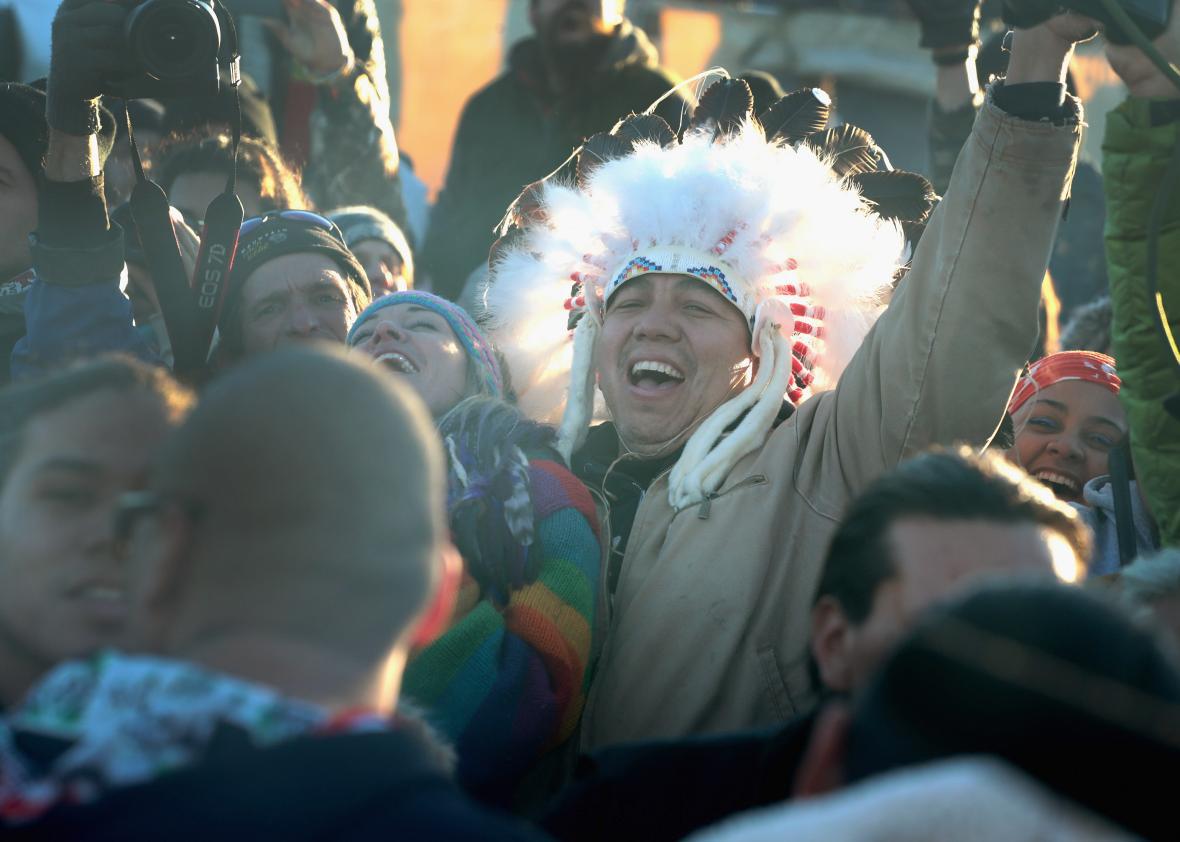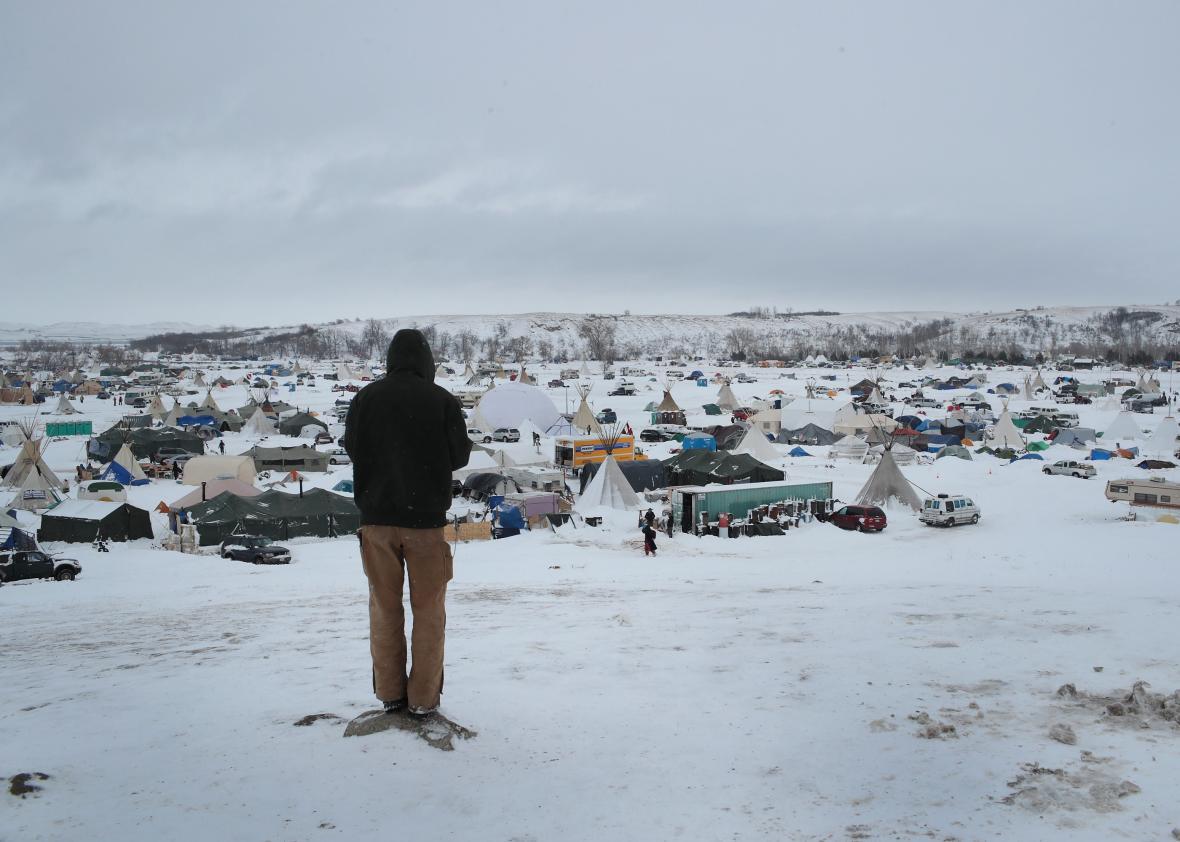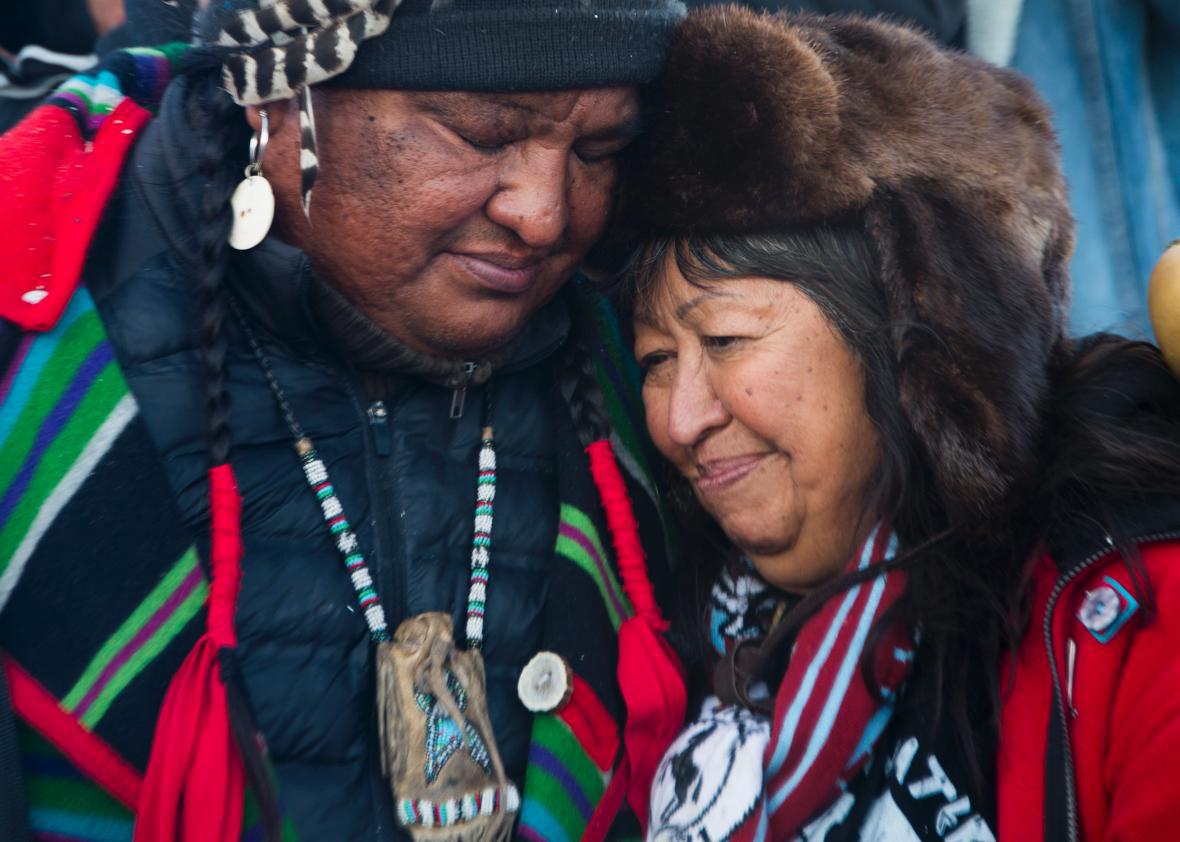The U.S. Army Corps of Engineers shocked thousands of protesters who were camped out in southern North Dakota when it announced on Sunday afternoon that it would not grant a permit to allow drilling under the Missouri River. In a statement, the Army Corps of Engineers said that it wouldn’t be granting the easement for the Dakota Access oil pipeline project to complete a segment underneath Lake Oahe, which is a water reservoir.
“Although we have had continuing discussion and exchanges of new information with the Standing Rock Sioux and Dakota Access, it’s clear that there’s more work to do,” Assistant Secretary for Civil Works Jo-Ellen Darcy said. “The best way to complete that work responsibly and expeditiously is to explore alternate routes for the pipeline crossing.”
The members of the Standing Rock Sioux tribe and its supporters who had been protesting the planned pipeline for months erupted in jubilation as the news of the decision began to spread across the camp. “We wholeheartedly support the decision of the administration and commend with the utmost gratitude the courage it took on the part of President Obama, the Army Corps, the Department of Justice, and the Department of the Interior to take steps to correct the course of history and to do the right thing,” said Standing Rock Sioux Tribal Chairman Dave Archambault II. “The Standing Rock Sioux Tribe and all of Indian Country will be forever grateful to the Obama Administration for this historic decision.”

Scott Olson/Getty Images
The move also quickly received praise from U.S. Secretary for the Interior Sally Jewell, who noted that this latest decision “ensures that there will be an in-depth evaluation of alternative routes for the pipeline and a closer look at potential impacts.” Jewell also pointed out that the move “underscores that tribal rights reserved in treaties and federal law, as well as Nation-to-Nation consultation with tribal leaders, are essential components of the analysis to be undertaken in the environmental impact statement going forward.”
Although tribal members and activists were celebrating their hard-fought victory, lawyers warned it was far from definitive. After all, the Dallas-based Energy Transfer Partners can sue to overturn the decision, as it has long said it didn’t want to reroute the project. The CEO of the company, Kelcy Warren, said in November he was “100 percent sure” that Donald Trump’s administration would approve the pipeline regardless of what happened with the Army Corps.
The decision to halt the project came a day before a deadline set by the federal government for protesters to leave the main camp site, which is on Army Corps land. But over the weekend, hundreds of military veterans arrived at the camp to express solidarity—and protect—the protest that has grown exponentially over the past few months.
The 1,172-mile Dakota Access oil pipeline that would carry 470,000 barrels per day was set to run within a half-mile of the Standing Rock Sioux reservation, and opponents had long been saying it could pollute drinking water as well as disturb sacred tribal sites.

Scott Olson/Getty Images
